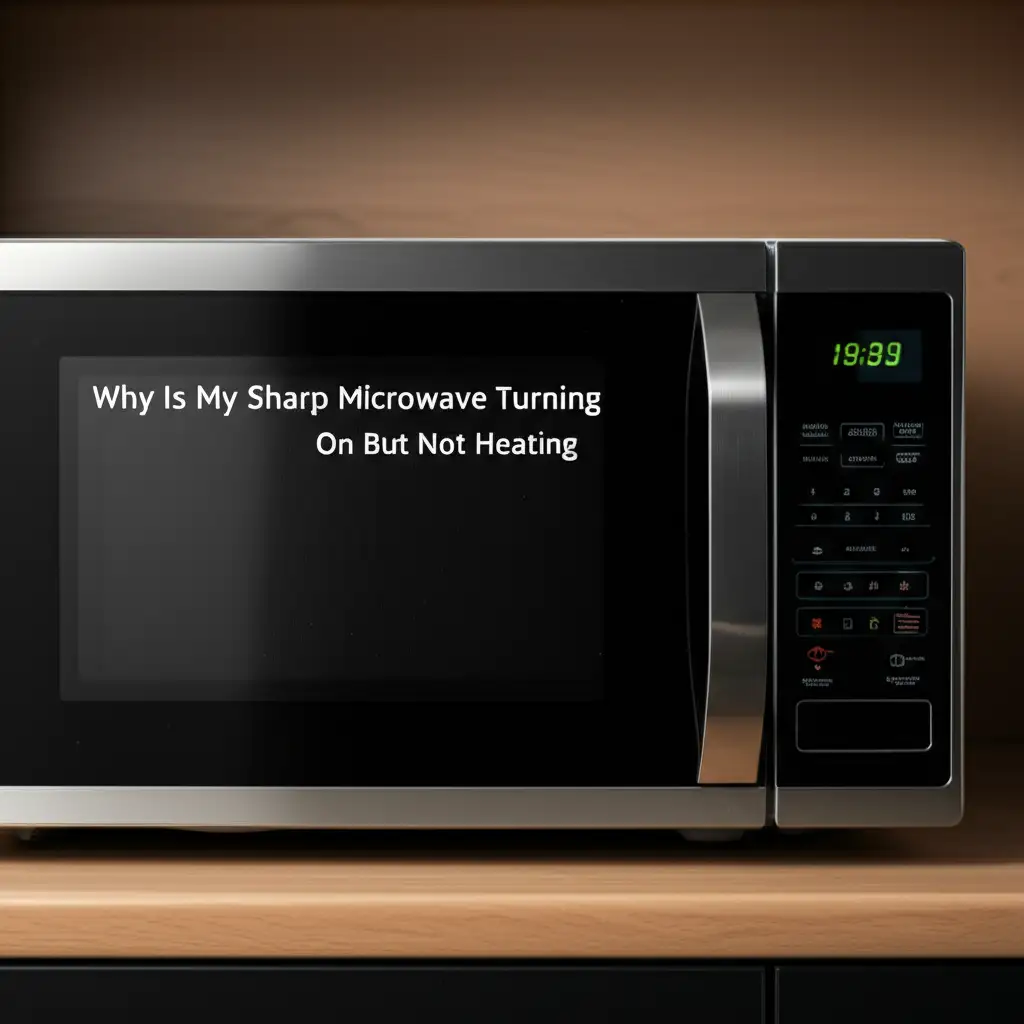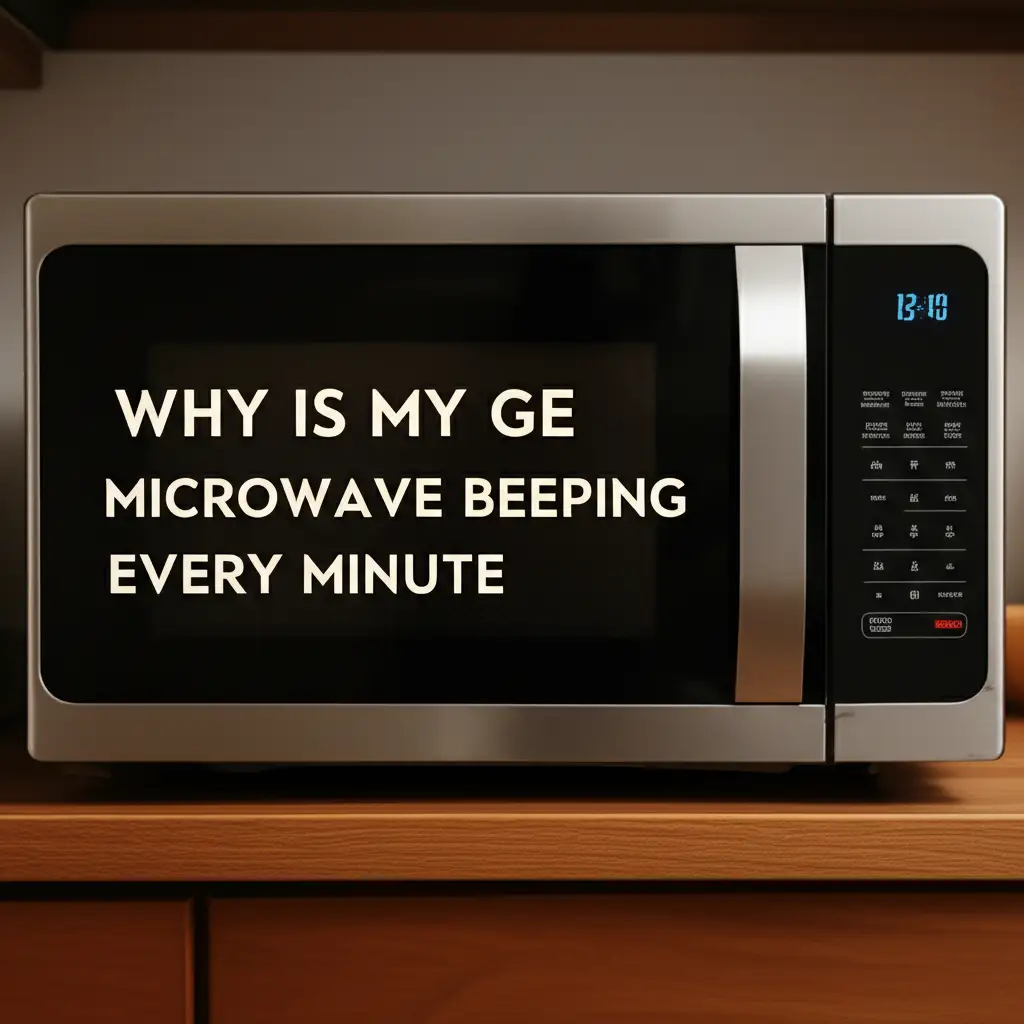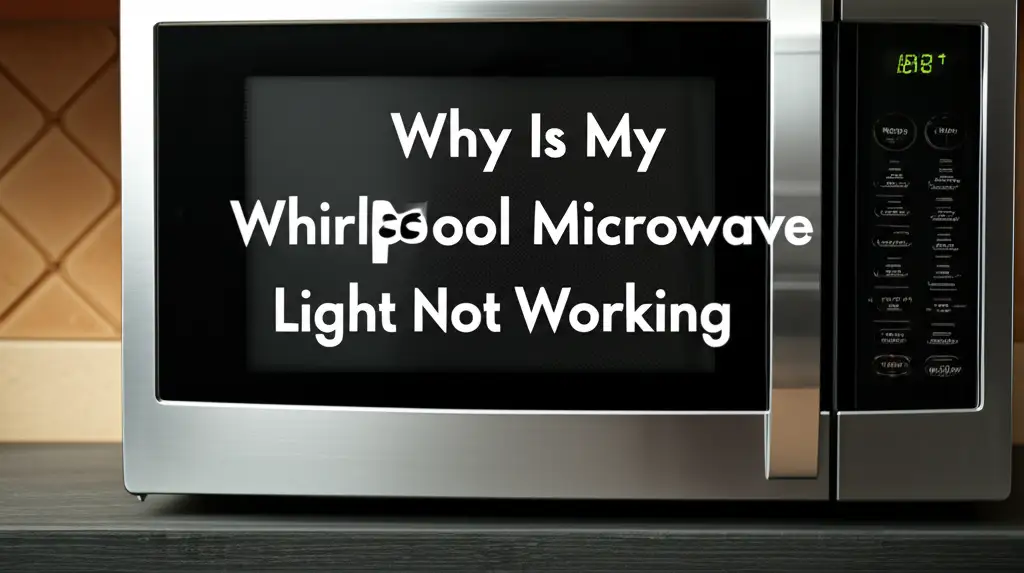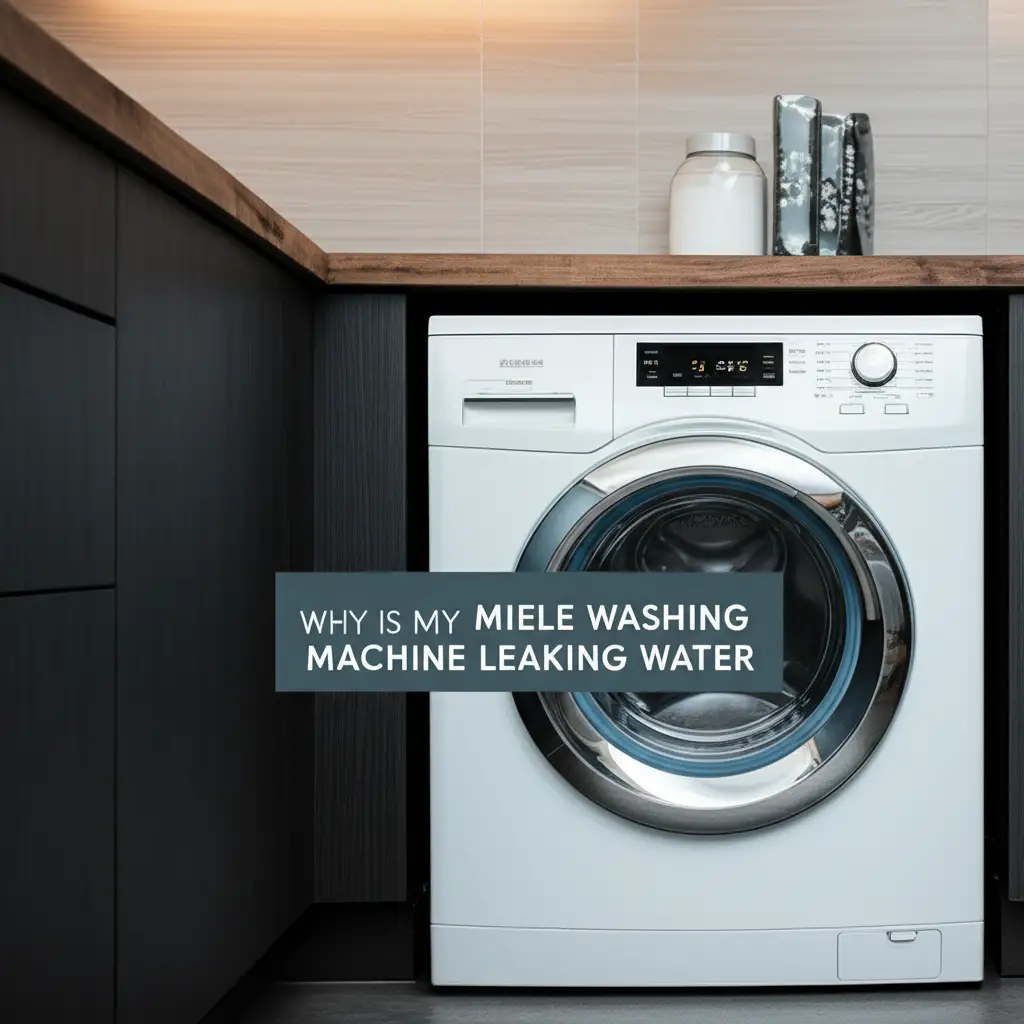· Katria Melrose · Appliance Repair · 16 min read
Why Is My Lg Microwave Working But Not Heating
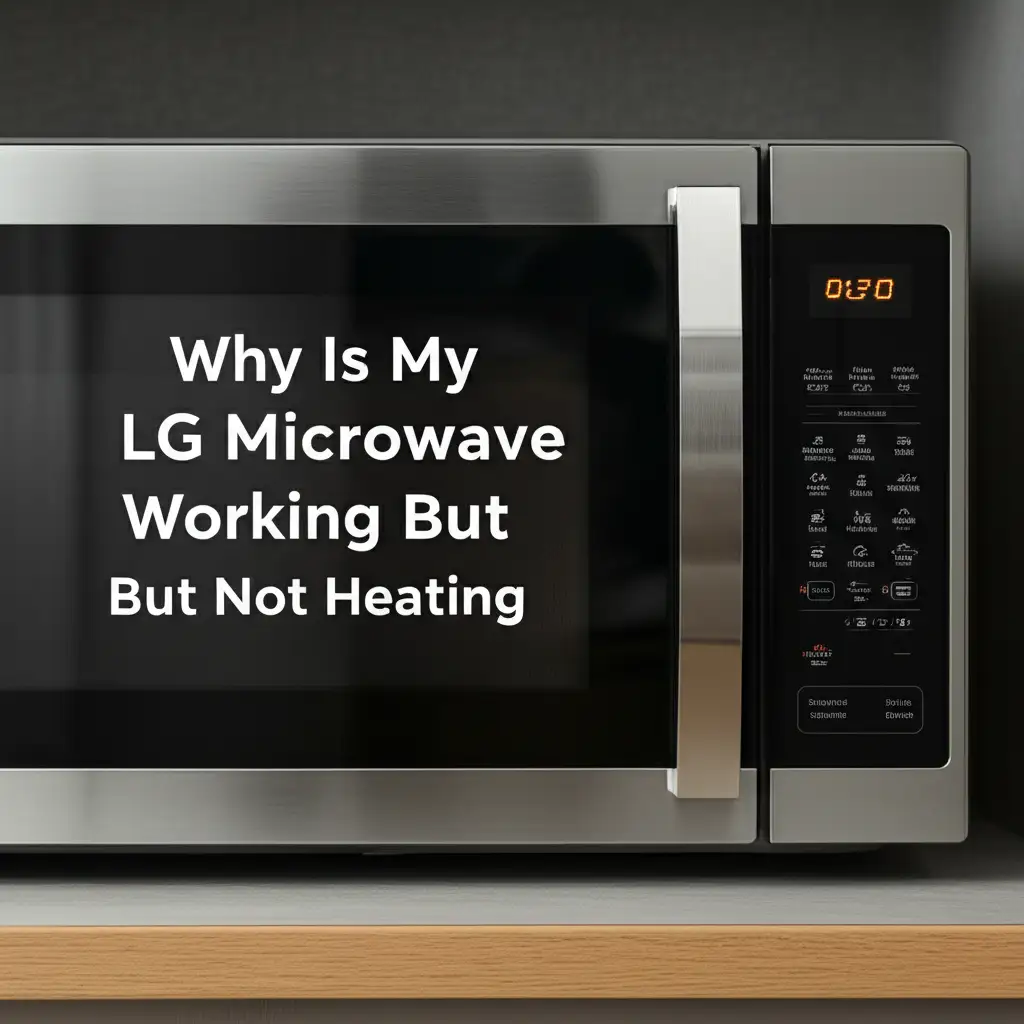
LG Microwave Not Heating? Get Your Food Hot Again
Imagine this: your LG microwave hums, the light turns on, the turntable spins, but your food stays cold. This issue, where your LG microwave is working but not heating, is quite frustrating. Many homeowners face this exact problem. It indicates a specific part of the heating system has failed. I have encountered this many times in my own home. This guide helps you diagnose and fix the common reasons why your LG microwave does not heat food. We will explore everything from simple fixes to more complex component failures. You will learn the steps to troubleshoot your appliance safely. Let’s get your microwave heating meals again.
Takeaway
If your LG microwave runs but does not heat, common culprits often include:
- Faulty Door Switches: The microwave needs to confirm the door is shut.
- Blown Fuse: A safety fuse might trip due to power surges or component failure.
- Failed High-Voltage Diode: This component converts AC to DC for the magnetron.
- Bad High-Voltage Capacitor: It stores and releases electrical energy.
- Defective Magnetron: This part creates the microwaves that heat food.
Concise Answer to Your Microwave Heating Problem
Your LG microwave works but does not heat food mainly because a core component of its high-voltage heating system has failed. This system includes the magnetron, high-voltage diode, capacitor, or the primary fuse. Door switch issues also prevent heating, even if the unit appears to run.
Understanding How Your LG Microwave Heats Food
Microwaves use electromagnetic waves to heat food. This process starts with the magnetron. The magnetron is the main component that generates microwaves. It needs high voltage to operate. This high voltage comes from a transformer, capacitor, and diode circuit. The microwaves then travel through a waveguide into the cooking chamber. Here, they make water molecules in your food vibrate rapidly. This vibration creates friction, which produces heat.
Your LG microwave must have all these parts working correctly to heat food. If the light comes on and the turntable spins, the control board and basic power supply are fine. The problem lies within the high-voltage system or related safety switches. These specific parts stop the heating process. Understanding this basic operation helps pinpoint the problem. I always start by thinking about the heat generation pathway.
When your microwave runs but does not heat, it means the magnetron is not producing microwaves. This can happen for several reasons. Power might not reach the magnetron. The magnetron itself could be faulty. Or, a safety component prevents its operation. We will explore each of these possibilities in detail. Knowing the function of each part makes troubleshooting easier.
Common Reasons Your LG Microwave Does Not Heat
Several specific issues cause an LG microwave to run but not heat. These problems often involve the high-voltage circuit. They also include crucial safety mechanisms. I will guide you through the most frequent culprits. You can check these parts one by one. This systematic approach helps you find the exact fault.
First, always remember microwave components store high voltage even when unplugged. This high voltage is dangerous. Only proceed if you feel comfortable with electrical work and safety. If unsure, call a professional. Safety is your top priority when troubleshooting any appliance.
The most common reasons include a bad magnetron, a faulty high-voltage diode, or a defective high-voltage capacitor. Blown fuses or issues with door interlock switches also frequently cause this problem. Sometimes, less common issues like a bad thermal cutout or a damaged waveguide also play a role. We will look at each potential issue in depth.
Key Components That Affect Heating
Your LG microwave relies on specific parts to generate heat. When one of these parts fails, the microwave might seem to work, but it does not heat food. I have seen this many times. Here is a list of the most important components:
- Magnetron: This is the core component that produces the microwaves. Without it, no heat.
- High-Voltage Diode: It converts AC power to DC power for the magnetron.
- High-Voltage Capacitor: It stores and releases electrical energy, boosting voltage for the magnetron.
- Transformer: It steps up voltage to power the high-voltage circuit.
- Door Switches (Interlock Switches): These switches ensure the door is closed before the microwave operates.
- Thermal Cutout/Fuse: These are safety devices that cut power if the microwave overheats or draws too much current.
Checking these parts helps you diagnose the “working but not heating” issue. Remember, always unplug the microwave before beginning any inspection or repair.
Inspecting the Door Interlock Switches
Door interlock switches are critical safety devices in your LG microwave. They ensure the microwave only operates when the door is fully closed and latched. Most microwaves have two or three of these switches. If even one switch fails or does not make proper contact, the microwave will not generate heat. The control panel and light might work, but the high-voltage circuit remains off.
You can often hear a distinct click when you close the microwave door. This click signals the door switches engaging. If you do not hear this click, or if the door feels loose, a switch might be faulty. A visual inspection is your first step. Check for any visible damage to the door latch or the switches themselves.
To test the switches, you need a multimeter. Unplug the microwave first. Remove the outer casing. Locate the door switches near the door latch mechanism. Disconnect the wires from each switch. Then, set your multimeter to the continuity setting. Test each switch. When the switch button is depressed (door closed position), it should show continuity (a beep or zero ohms). When released (door open position), it should show no continuity. If any switch fails this test, replace it. Many similar models, like a Sharp microwave turning on but not heating, often share this common problem. You can find more information about troubleshooting various microwave issues, including door switch problems, at Why Is My Sharp Microwave Turning On But Not Heating.
Replacing a door switch is usually straightforward. Ensure you purchase the correct replacement part for your LG microwave model. A faulty door switch is a common reason why your microwave runs but does not heat food. It is also a critical safety feature. Do not bypass these switches.
Troubleshooting the High-Voltage Fuse
Your LG microwave contains a high-voltage fuse. This fuse protects the microwave from electrical surges and component failures. If the high-voltage fuse blows, it cuts power to the high-voltage circuit. This means the magnetron will not receive power, and your microwave will not heat food. However, the control panel, light, and turntable often continue to work.
Finding the high-voltage fuse requires opening the microwave casing. Always unplug the microwave before you do this. This fuse is typically located near the high-voltage capacitor or transformer. It often looks like a small glass tube with metal caps on each end. Sometimes, it is housed within a plastic casing.
To test the fuse, you will need a multimeter. Set the multimeter to the continuity setting. Touch one probe to each end of the fuse. If the fuse is good, your multimeter will show continuity (a beep or near-zero ohms). If there is no continuity, the fuse is blown and needs replacement. A blown fuse often points to another underlying problem. For example, a faulty magnetron or a shorted capacitor can cause the fuse to blow. If your LG microwave is not heating food but runs, a blown fuse is a very common suspect. You can learn more about general microwave troubleshooting at Why Is My LG Microwave Not Heating Food But Runs.
Before replacing the fuse, inspect the other high-voltage components. Look for signs of damage or arcing on the capacitor, diode, and magnetron. If you just replace the fuse without addressing the root cause, the new fuse will likely blow again. Replacing the high-voltage fuse can be a quick fix, but only if another component did not cause it to fail.
Diagnosing the High-Voltage Capacitor and Diode
The high-voltage capacitor and diode are crucial parts of your LG microwave’s heating system. They work together to supply the extremely high voltage the magnetron needs. If either of these components fails, your microwave will likely run but not heat. I have seen many microwaves fail due to these parts.
High-Voltage Capacitor: This capacitor stores a large electrical charge. It works with the transformer and diode to create the high voltage. A faulty capacitor can be extremely dangerous. It can retain a lethal charge even after the microwave is unplugged. Always discharge the capacitor before touching it. Use a well-insulated screwdriver to short the capacitor terminals. Place the metal tip of the screwdriver on one terminal and the shaft against the other. You might see a spark. Repeat this process a few times to ensure it is fully discharged.
Once discharged, you can test the capacitor. Set your multimeter to a high resistance (ohms) setting. Touch the probes to the capacitor terminals. A good capacitor will show a gradually increasing resistance, then decrease to infinite resistance. If it shows zero resistance immediately (shorted) or infinite resistance immediately (open), it is bad. A bulging or leaky capacitor is also a sign of failure.
High-Voltage Diode: The diode acts as a one-way valve for electricity. It converts the alternating current (AC) from the transformer into direct current (DC) pulses for the magnetron. Unlike other diodes, the high-voltage diode in a microwave does not allow a simple continuity test with a standard multimeter. It often tests “open” in both directions with a typical multimeter, even if it is good. The best way to test it is for obvious signs of burning or arcing. If the diode is burnt or if the capacitor is faulty, it is often best to replace both the diode and the capacitor together. This ensures the entire high-voltage circuit functions correctly. Many GE microwave models also face similar issues with their heating components; you can find more insights at Why Is My GE Microwave Not Heating Food But Runs.
Replacing these components requires extreme caution due to the high voltage involved. If you are not comfortable working with high voltage, call a certified appliance technician. These repairs are critical for both microwave function and your safety.
Addressing Magnetron Failure in LG Microwaves
The magnetron is the component that actually produces the microwaves that heat your food. If your LG microwave runs but does not heat, a defective magnetron is one of the most common causes. The magnetron generates intense heat and radiation, and it can wear out over time.
Symptoms of a failing magnetron include no heating, a burning smell, or unusual buzzing or humming noises. Sometimes, you might even see sparking inside the microwave cavity, especially near the waveguide cover. If you observe any of these signs, especially a burning smell, stop using the microwave immediately.
Testing a magnetron directly with a multimeter is difficult and often unreliable for pinpointing all types of failures. However, you can perform a basic continuity test on its filament terminals. First, ensure the microwave is unplugged and the high-voltage capacitor is discharged. The magnetron has two terminals that connect to the high-voltage circuit. These are usually on top or the side. A good magnetron should show continuity across these two terminals (usually around 0.1 ohms). If it shows no continuity (open circuit), the filament is broken, and the magnetron is bad. If it shows continuity to the magnetron casing (ground), it is also faulty.
If the magnetron filament tests good, but the microwave still does not heat, the internal components of the magnetron might have failed. There is no practical way to repair a magnetron. You must replace the entire unit. When buying a new magnetron, make sure it is the correct model for your LG microwave. Swapping out a magnetron requires careful handling and precise installation.
Replacing a magnetron can be a complex and expensive repair. Given the cost of parts and the potential danger, you might consider the age and overall condition of your LG microwave. Sometimes, replacing the magnetron costs almost as much as buying a new microwave. If you feel uncomfortable with this repair, call a qualified technician. Safety is always paramount when dealing with high-voltage components like the magnetron. For more general advice on microwaves not heating, refer to this resource: Why Is My LG Microwave Not Heating Food But Runs.
Examining the Thermal Cutout and Waveguide
Beyond the main high-voltage components, two other parts sometimes cause an LG microwave to run but not heat: the thermal cutout and the waveguide. These are less common failures but are worth checking if other diagnoses fail.
Thermal Cutout (Thermal Fuse): This is a safety device. It automatically cuts power to the microwave if it overheats. It is designed to prevent fires or damage from excessive heat. If your microwave runs for an extended period without heating, or if the cooling fan fails, the thermal cutout might trip. Once tripped, it remains open, stopping the high-voltage circuit. Like a standard fuse, a thermal cutout can be tested for continuity with a multimeter. Unplug the microwave and locate the thermal cutout. It often sits on top of the magnetron or near the exhaust vent. A good thermal cutout will show continuity. If it shows no continuity, it is blown and needs replacement. If it blew, you must also find out why the microwave overheated. This could be due to blocked vents or a failing cooling fan.
Waveguide and Cavity Issues: The waveguide is a metal channel that directs the microwaves from the magnetron into the cooking chamber. The waveguide cover, also called a mica sheet, prevents food particles from entering the waveguide. If this cover is dirty, burnt, or missing, microwaves can arc or spark inside the cavity. This arcing can damage the magnetron or the waveguide itself. If the waveguide itself is damaged or has carbon buildup, it can prevent microwaves from reaching the food efficiently. This makes the microwave seem to run but not heat effectively.
Visually inspect the inside of your microwave cavity. Look for burnt spots, especially on the waveguide cover or the ceiling of the cavity. Clean any food debris or grease buildup. If the waveguide cover is burnt, replace it. It is a relatively inexpensive part. If the internal cavity or waveguide itself shows signs of significant damage or arcing, it indicates a more serious problem. This type of damage can sometimes be fixed, but it often means the microwave needs replacement. Always ensure the cavity is clean and the waveguide cover is intact for efficient and safe operation.
When to Call a Professional for LG Microwave Repair
While many LG microwave heating issues can be diagnosed and fixed by a determined homeowner, some situations demand professional help. I always prioritize safety. Working with microwave ovens involves extremely high voltages, even when unplugged. The risk of electric shock is severe.
Call a professional if:
- You are uncomfortable with electrical work: If handling a multimeter or identifying electrical components makes you nervous, do not proceed. Electrical safety is paramount.
- The high-voltage capacitor needs discharge: If you do not know how to safely discharge the capacitor or are hesitant to do so, a professional should handle it. This component can hold a lethal charge.
- The problem persists after checking simple fixes: If you have checked door switches, fuses, and visually inspected basic components, and the microwave still does not heat, the issue might be more complex.
- You suspect magnetron failure: Replacing a magnetron is often costly and requires specific knowledge. A professional can confirm the diagnosis and install the new part correctly. Sometimes, it is similar to diagnosing a larger issue, like when an over-the-range microwave stops working entirely.
- There are signs of arcing or burning: If you see sparks, smell burning, or notice physical damage inside the microwave cavity, stop using it immediately. These issues pose a fire hazard. A professional can assess the safety of continued use.
- The microwave is old: If your LG microwave is nearing the end of its lifespan, investing in expensive repairs might not be cost-effective. A technician can advise whether repair or replacement is the better option.
A professional appliance technician has the training, tools, and experience to diagnose and safely repair complex microwave issues. They can also ensure that the repaired appliance meets safety standards. Do not risk your safety or further damage your appliance by attempting repairs beyond your comfort level.
FAQ Section
Q1: Why does my LG microwave hum loudly but not heat?
A loud hum often indicates a problem with the high-voltage components. This includes the high-voltage transformer, capacitor, or diode. A faulty magnetron can also cause a loud hum. Unplug the microwave immediately and have it inspected. These components handle dangerous voltage.
Q2: Can a dirty microwave cause it not to heat?
Generally, a dirty microwave does not prevent it from heating. However, a heavily soiled waveguide cover can cause arcing and sparks. This arcing can damage the magnetron or the waveguide. This damage then prevents proper heating. Regular cleaning helps maintain microwave function and safety.
Q3: How do I test the high-voltage capacitor safely?
Always unplug the microwave before touching any internal parts. First, discharge the capacitor using a well-insulated screwdriver. Short the capacitor terminals together repeatedly. Then, use a multimeter set to a high resistance range. A good capacitor will show increasing resistance then go to infinite. If it shows zero or infinite resistance immediately, it is bad.
Q4: Is it worth repairing an LG microwave that doesn’t heat?
The worth of repair depends on the cost of the part, the age of the microwave, and the repair labor cost. Simple fixes like door switches or a fuse are often economical. Major parts like the magnetron can be expensive. If the repair cost approaches a new microwave’s price, replacement is often better.
Q5: Can power surges affect my LG microwave’s heating?
Yes, power surges can damage microwave components. A surge might blow the primary fuse or even damage the high-voltage transformer, capacitor, or diode. Using a surge protector for your microwave can offer some protection. If a surge causes damage, professional inspection is recommended.
Q6: Why do my microwave lights and display work but it doesn’t heat?
This common symptom means the control board and basic power supply are functional. The issue lies within the high-voltage circuit responsible for generating microwaves. Common culprits are the door switches, high-voltage fuse, capacitor, diode, or the magnetron itself. Each component must work correctly for heating.
Conclusion
When your LG microwave works but does not heat, it points to specific issues within its high-voltage system. We explored the main culprits: door interlock switches, the high-voltage fuse, capacitor, diode, and the magnetron. Each component plays a vital role in generating the microwaves that cook your food. By systematically troubleshooting these parts, you can often identify the root cause. I have found this structured approach saves time and effort.
Remember to prioritize safety above all else. Always unplug your LG microwave before beginning any inspection or repair. High-voltage components can store a dangerous electrical charge. If you feel uncomfortable at any point or lack the necessary tools, do not hesitate to call a certified appliance technician. They have the expertise to safely diagnose and fix complex problems. Whether you tackle the repair yourself or call a professional, understanding why your LG microwave is working but not heating helps you make informed decisions. Get your LG microwave back to efficiently heating your meals soon!


